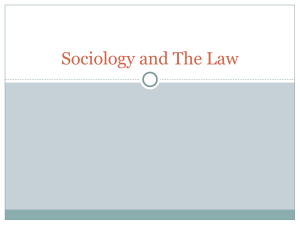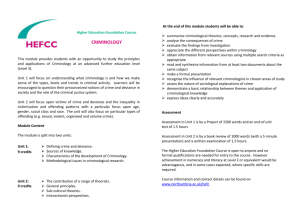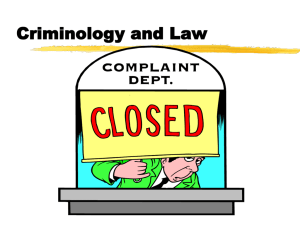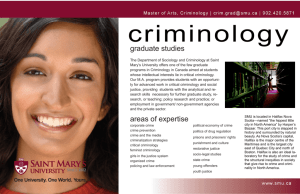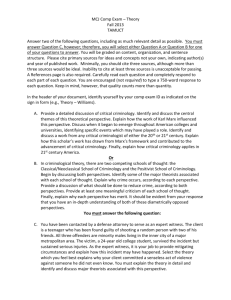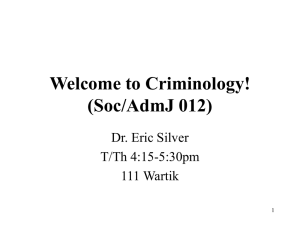here
advertisement
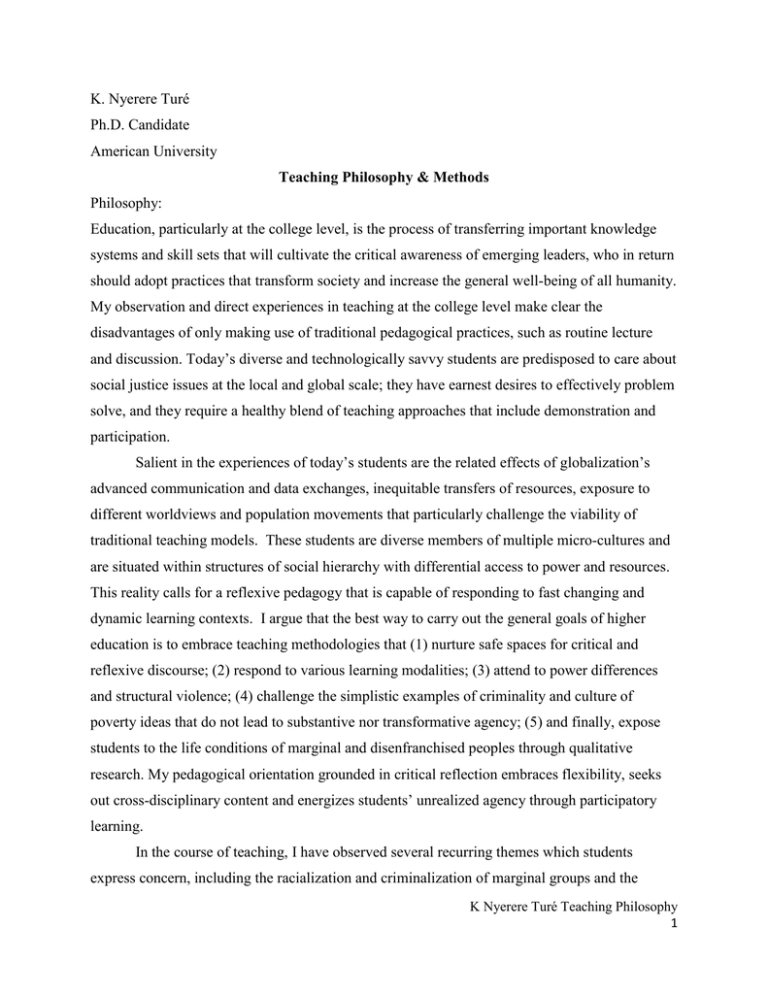
K. Nyerere Turé Ph.D. Candidate American University Teaching Philosophy & Methods Philosophy: Education, particularly at the college level, is the process of transferring important knowledge systems and skill sets that will cultivate the critical awareness of emerging leaders, who in return should adopt practices that transform society and increase the general well-being of all humanity. My observation and direct experiences in teaching at the college level make clear the disadvantages of only making use of traditional pedagogical practices, such as routine lecture and discussion. Today’s diverse and technologically savvy students are predisposed to care about social justice issues at the local and global scale; they have earnest desires to effectively problem solve, and they require a healthy blend of teaching approaches that include demonstration and participation. Salient in the experiences of today’s students are the related effects of globalization’s advanced communication and data exchanges, inequitable transfers of resources, exposure to different worldviews and population movements that particularly challenge the viability of traditional teaching models. These students are diverse members of multiple micro-cultures and are situated within structures of social hierarchy with differential access to power and resources. This reality calls for a reflexive pedagogy that is capable of responding to fast changing and dynamic learning contexts. I argue that the best way to carry out the general goals of higher education is to embrace teaching methodologies that (1) nurture safe spaces for critical and reflexive discourse; (2) respond to various learning modalities; (3) attend to power differences and structural violence; (4) challenge the simplistic examples of criminality and culture of poverty ideas that do not lead to substantive nor transformative agency; (5) and finally, expose students to the life conditions of marginal and disenfranchised peoples through qualitative research. My pedagogical orientation grounded in critical reflection embraces flexibility, seeks out cross-disciplinary content and energizes students’ unrealized agency through participatory learning. In the course of teaching, I have observed several recurring themes which students express concern, including the racialization and criminalization of marginal groups and the K Nyerere Turé Teaching Philosophy 1 related incidents of racial profiling, police shootings of unarmed minorities and mass incarceration, public housing and urban renewal, displacement and the general political economic processes that underlie inequality. Many of my past and current students seek not only deeper understanding of these complex phenomena, but also instruction as to how to change them, particularly the practice of criminalizing a race. The disciplines of anthropology and criminology share an established tradition in investigating identity, crime, and inequality. I seek to meet students’ inquiries and concerns with a critical teaching paradigm grounded in both anthropology and criminology disciplines that should illuminate the practical application of knowledge and students’ own agency. The teaching philosophy embraced here is based on several years of engagement in academic environments as a student, adjunct professor, and recently as a full-time visiting instructor. To meet the outlined teaching goals, I actively refine my teaching methods in an ongoing basis through students’ feedback, course evaluations, input from colleagues, and in suitable and timely ways that appropriately translate scholarly content to local and global social conditions. Below, I share some of the instructional techniques I’ve adopted, developed, and continue to modify. Select Sample of Teaching Techniques: “You Chart the Solution” (YCS) is a learning exercise I use in which I divide students into small groups around a pressing topic, such as drug-dealing crimes, structural violence, and/or issues related to community development. I ask the students to outline current and popular arguments, pro and con, to a singular issue on the white board (or chart paper). Students are then required to use course concepts and theories to evaluate the debate and effectively demonstrate their competency in using social theory by assuming a position guided in the literature. This exercise serves well to create small, culturally diverse groupings in class and allows for cross-cultural exchanges. A complimentary exercise I use is called “Think – Pair & Share through Multimedia” (TPSM). In this exercise, I divide students into pairs, ask each participant to discuss how a particular issue, such as poverty or crime, is treated with a social group they claim membership; they are then instructed to discuss the similar and dissimilar understandings and treatments of the selected topic with their paired partners. While this exercise allows students to reflexively develop their identity profiles, I probe them to consider the K Nyerere Turé Teaching Philosophy 2 difficulty in assuming a homogenizing explanation of how their selected cultural group would treat a particular social phenomenon without eliding forms of intragroup difference. Finally, I merge the student pairs into group discussion at the scale of the entire class and ask students to offer insights on inter/intra-cultural differences. I also ask them to think about the way portrayals of crime and poverty in mass media corresponds with their cultural understanding of the issues. This exercise brings the various cultural understandings of social issues into relief and draws attention to the way mass media fashions social consciousness. It demonstrates the importance for analyzing media imagery of marginal populations. The two aforementioned exercises enable me to create and maintain an atmosphere of trust, respect and cultural tolerance throughout my courses, but also begin to engender a space for critical and reflexive awareness as well as participatory learning. Participatory education seeks to involve students as co-constructors of the learning environment and in this regard, I value students as active participants. In addition to having students work collaboratively and integratively, I use devices such as the “Parking Board” (PB), to invite students to submit ideas about course content, instruction, and relevant social matters of value to the course. The PB is a way to allow students to suggest new perspectives of their interest into the course content and to allow them to shape the learning experience. To further my aim of participatory learning environment, I use an exercise called “Focus Group Discussion” (FGD), to illuminate and prepare students for the cooperative nature of cosmopolitan society. In this assignment, I assign readings from course content that focus on social inequality, crime (both social and corporate), and general social conflict. Then I form students into groups where they are free to choose the best method to present the article to the class. As the instructor, I am looking for information on the authors’ standpoints, article summaries to include pro/con/complex positioning, intertextual thinking that compares and contrasts with other course materials, and finally how the group engages the class with well-thought-out discussion and questions. Beyond a participatory aim, this exercise allows me to identify students’ different learning modalities, as well as affords students the opportunity to enhance their interpersonal skills. I develop exercises for learning beyond the class as well. There has been a significant shift in criminology, anthropology and sociology that emphasizes public engagement (Burawoy 2005; Currie 2007; Lassiter et al. 2005; Ruggiero 2012; Turner 2013) and extending learning beyond the classroom. I use two exercises, “Coming K Nyerere Turé Teaching Philosophy 3 Out and Going Public” (CO & GP) and “Urban Windshield Tour” (UWT) to expand the classroom boundary to the broader community. CO & GP requires students to select a thoughtprovoking statistic, quote or passage from the course content with my approval, and then to chalk that selected content in a designated and public location (common asphalt or concrete sidewalk in the central campus plaza that is consistent with the university’s chalking policy). Then the students are to randomly engage a dozen passersby about their thoughts on the related chalked text. Finally they are to include the recorded thoughts of passersby in an essay that includes discussion of the scope and nature of the issue and how they would develop a public campaign, and an evaluation of their experience carrying out the assignment. Among this assignment’s many benefits: first it introduces students to a creative, public, research and engagement approach; second it expands the scope of classroom learning to the larger campus community; and third it activates students’ leadership capacity towards issues they are most passionate about. The UWT exercise requires groups of students to select thoroughfares that traverse an urban to suburban geography and that cross though different communities of ethnic/racial and social classes. They are to travel these routes from the safety of their vehicles (through pedestrian travel only when safe to do so) and to observe the various environmental factors, such as built, natural and social environmental factors that may cause, maintain, and/or better explain social difference and inequality. Students must consider social policy as they think through their selected route. They may take photos and/or collect data through interviews in order to compose their course report and presentation. UWT’s final task requires students to suggest or design a public policy intended to solve the social issue they identified. This assignment is intended to ignite students’ sense of participatory development and community problem solving. This exercise helps students to disabuse themselves of the sensational narratives of crime, deviance, and “culture of poverty” notions regarding marginal communities, and to have them reflexively and critically examine the underlying structural conditions that produce and reproduce social inequality. The outlined exercises here represent some of the teaching devices I continue to use and develop as an instructor in the disciplines of anthropology and criminology/criminal justice. My theory and methods of teaching are grounded in the idea that collegiate education is integral to solving social equality. The traditional practice of philosophizing the world fails to fully empowered students because students are looking for ways to refashion the world in just ways. K Nyerere Turé Teaching Philosophy 4 References: Burawoy, Michael 2005 For Public Sociology. American Sociological Review 70(1): 4–28. Currie, Elliott 2007 Against Marginality Arguments for a Public Criminology. Theoretical Criminology 11(2): 175–190. Lassiter, LukeEric, Samuel R Cook, Les Field, et al. 2005 Collaborative Ethnography and Public Anthropology. Current Anthropology 46(1): 83– 106. Ruggiero, Vincenzo 2012 How Public Is Public Criminology? Crime, Media, Culture 8(2): 151–160. Turner, Elizabeth 2013 Beyond “Facts” and “Values” Rethinking Some Recent Debates About the Public Role of Criminology. British Journal of Criminology 53(1): 149–166. K Nyerere Turé Teaching Philosophy 5
